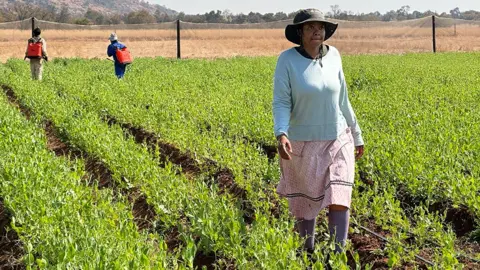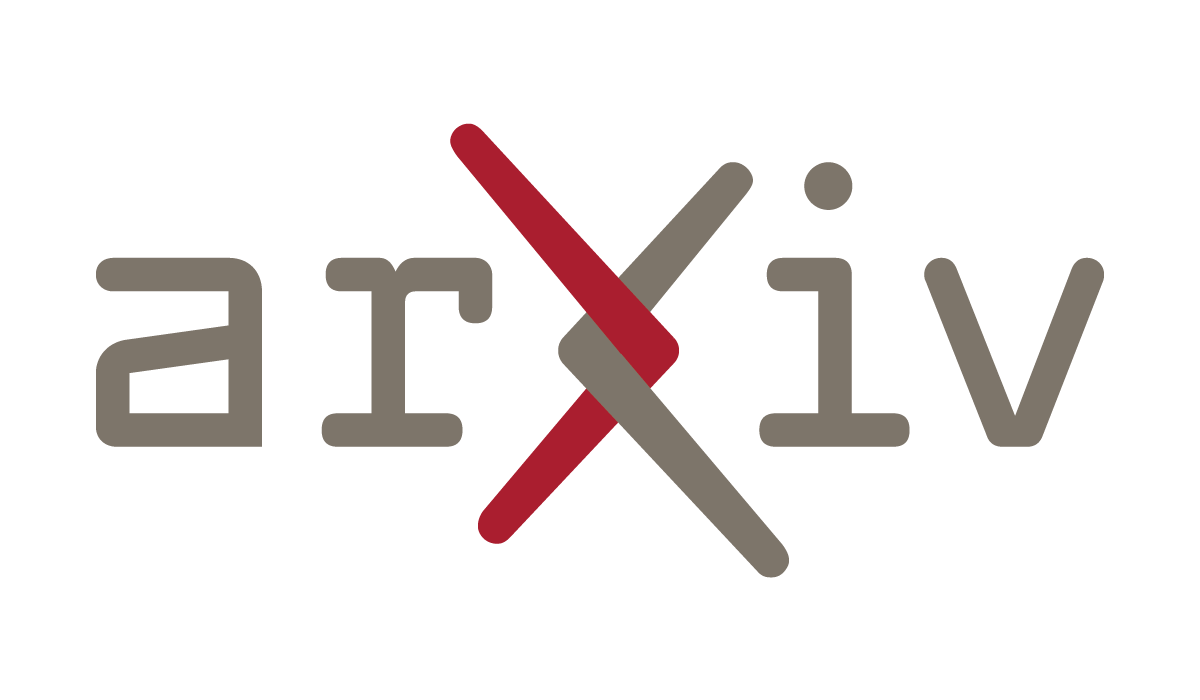AI Research
Experts aim to close the language gap

Pumza FihlaniBBC News in Johannesburg
 BBC
BBCAlthough Africa is home to a huge proportion of the world’s languages – well over a quarter according to some estimates – many are missing when it comes to the development of artificial intelligence (AI).
This is both an issue of a lack of investment and readily available data.
Most AI tools, such as ChatGPT, used today are trained on English as well as other European and Chinese languages.
These have vast quantities of online text to draw from.
But as many African languages are mostly spoken rather than written down, there is a lack of text to train AI on to make it useful for speakers of those languages.
For millions across the continent this means being left out.
Researchers who have been trying to address this issue have recently released what is thought to be the largest known dataset of African languages.
“We think in our own languages, dream in them and interpret the world through them. If technology doesn’t reflect that, a whole group risks being left behind,” the University of Pretoria’s Prof Vukosi Marivate, who worked on the project, tells the BBC.
“We’re going through this AI revolution, imagining all that can be done with it. Now imagine there’s a part of the population that just doesn’t have that access because all the information is in English.”
The African Next Voices project brought together linguists and computer scientists to create AI-ready datasets in 18 African languages.
That may just be a small portion of the more than 2,000 languages estimated to be spoken across the continent but those involved in the project say they hope to expand in the future.
In two years, the team recorded 9,000 hours of speech across Kenya, Nigeria and South Africa, capturing everyday scenarios in farming, health and education.
The languages recorded included Kikuyu and Dholuo in Kenya, Hausa and Yoruba in Nigeria and isiZulu and Tshivenda in South Africa, some of which are spoken by millions of people.
“You need some basis to start off with and that’s what AfricanNext Voices is and then people will build on top of that and add their own innovations,” says Prof Marivate, who led the research in South Africa.
His Kenyan counterpart, computational linguist Lilian Wanzare, says recording the speech on the continent meant creating data aimed at reflecting how people really live and speak.
“We gathered voices from different regions, ages and backgrounds so it’s as inclusive as possible. Big tech can’t always see those nuances,” she says.
The project was made possible by a $2.2m (£1.6m) Gates Foundation grant.
The data will be open access, allowing developers to build tools that translate, transcribe and respond in African languages.
There are already small examples of how indigenous languages used in AI can be used to solve real-life challenges in Africa, according to Prof Marivate.

Farmer Kelebogile Mosime manages a 21-hectare site in Rustenburg, the heart of South Africa’s platinum region.
The 45-year-old works with a small team to cultivate rows of vegetables – including beans, spinach, cauliflower and tomatoes.
She only began three years ago, with a cabbage crop, and to help she uses an app called AI-Farmer, which recognises several South African languages, including Sesotho, isiZulu and Afrikaans, to help solve various problems.
“As someone still learning to farm, you face a lot of challenges,” Ms Mosime says.
“Daily, I see the benefits of being able to use my home language Setswana on the app when I run into problems on the farm, I ask anything and get a useful answer.
“For somebody in the rural areas like me who is not exposed to technology it’s useful. I can ask about different options for insect control, it’s also been useful with diagnosing sick plants,” she beams underneath a wide-brim sunhat.
Lelapa AI is a young South African company building AI tools in African languages for banks and telecoms firms.
For its CEO Pelonomi Moiloa, what is currently available is very restrictive.
“English is the language of opportunity. For many South Africans who don’t speak it, it’s not just inconvenient – it can mean missing out on essential services like healthcare, banking or even government support,” she tells the BBC.
“Language can be a huge barrier. We’re saying it shouldn’t be.”
But this is more than being about business and convenience.
For Prof Marivate there is also a danger that without African language initiatives, something else could be lost
“Language is access to imagination,” he says.
“It’s not just words – it’s history, culture, knowledge. If indigenous languages aren’t included, we lose more than data; we lose ways of seeing and understanding the world.”
You may also be interested in:
 Getty Images/BBC
Getty Images/BBCAI Research
Artificial Intelligence Cheating | Nation

We recognize you are attempting to access this website from a country belonging to the European Economic Area (EEA) including the EU which
enforces the General Data Protection Regulation (GDPR) and therefore access cannot be granted at this time.
For any issues, call 435-752-2121.
AI Research
Graph Alignment via Dual-Pass Spectral Encoding and Latent Space Communication

arXiv:2509.09597v1 Announce Type: cross
Abstract: Graph alignment-the problem of identifying corresponding nodes across multiple graphs-is fundamental to numerous applications. Most existing unsupervised methods embed node features into latent representations to enable cross-graph comparison without ground-truth correspondences. However, these methods suffer from two critical limitations: the degradation of node distinctiveness due to oversmoothing in GNN-based embeddings, and the misalignment of latent spaces across graphs caused by structural noise, feature heterogeneity, and training instability, ultimately leading to unreliable node correspondences. We propose a novel graph alignment framework that simultaneously enhances node distinctiveness and enforces geometric consistency across latent spaces. Our approach introduces a dual-pass encoder that combines low-pass and high-pass spectral filters to generate embeddings that are both structure-aware and highly discriminative. To address latent space misalignment, we incorporate a geometry-aware functional map module that learns bijective and isometric transformations between graph embeddings, ensuring consistent geometric relationships across different representations. Extensive experiments on graph benchmarks demonstrate that our method consistently outperforms existing unsupervised alignment baselines, exhibiting superior robustness to structural inconsistencies and challenging alignment scenarios. Additionally, comprehensive evaluation on vision-language benchmarks using diverse pretrained models shows that our framework effectively generalizes beyond graph domains, enabling unsupervised alignment of vision and language representations.
Source link
AI Research
A Unified Model for Robot Interaction, Reasoning and Planning

View a PDF of the paper titled Robix: A Unified Model for Robot Interaction, Reasoning and Planning, by Huang Fang and 8 other authors
Abstract:We introduce Robix, a unified model that integrates robot reasoning, task planning, and natural language interaction within a single vision-language architecture. Acting as the high-level cognitive layer in a hierarchical robot system, Robix dynamically generates atomic commands for the low-level controller and verbal responses for human interaction, enabling robots to follow complex instructions, plan long-horizon tasks, and interact naturally with human within an end-to-end framework. Robix further introduces novel capabilities such as proactive dialogue, real-time interruption handling, and context-aware commonsense reasoning during task execution. At its core, Robix leverages chain-of-thought reasoning and adopts a three-stage training strategy: (1) continued pretraining to enhance foundational embodied reasoning abilities including 3D spatial understanding, visual grounding, and task-centric reasoning; (2) supervised finetuning to model human-robot interaction and task planning as a unified reasoning-action sequence; and (3) reinforcement learning to improve reasoning-action consistency and long-horizon task coherence. Extensive experiments demonstrate that Robix outperforms both open-source and commercial baselines (e.g., GPT-4o and Gemini 2.5 Pro) in interactive task execution, demonstrating strong generalization across diverse instruction types (e.g., open-ended, multi-stage, constrained, invalid, and interrupted) and various user-involved tasks such as table bussing, grocery shopping, and dietary filtering.
Submission history
From: Wei Li [view email]
[v1]
Mon, 1 Sep 2025 03:53:47 UTC (29,592 KB)
[v2]
Thu, 11 Sep 2025 12:40:54 UTC (29,592 KB)
-

 Business2 weeks ago
Business2 weeks agoThe Guardian view on Trump and the Fed: independence is no substitute for accountability | Editorial
-
Tools & Platforms1 month ago
Building Trust in Military AI Starts with Opening the Black Box – War on the Rocks
-

 Ethics & Policy2 months ago
Ethics & Policy2 months agoSDAIA Supports Saudi Arabia’s Leadership in Shaping Global AI Ethics, Policy, and Research – وكالة الأنباء السعودية
-

 Events & Conferences4 months ago
Events & Conferences4 months agoJourney to 1000 models: Scaling Instagram’s recommendation system
-

 Jobs & Careers2 months ago
Jobs & Careers2 months agoMumbai-based Perplexity Alternative Has 60k+ Users Without Funding
-

 Podcasts & Talks2 months ago
Podcasts & Talks2 months agoHappy 4th of July! 🎆 Made with Veo 3 in Gemini
-

 Education2 months ago
Education2 months agoMacron says UK and France have duty to tackle illegal migration ‘with humanity, solidarity and firmness’ – UK politics live | Politics
-

 Education2 months ago
Education2 months agoVEX Robotics launches AI-powered classroom robotics system
-

 Funding & Business2 months ago
Funding & Business2 months agoKayak and Expedia race to build AI travel agents that turn social posts into itineraries
-

 Podcasts & Talks2 months ago
Podcasts & Talks2 months agoOpenAI 🤝 @teamganassi


